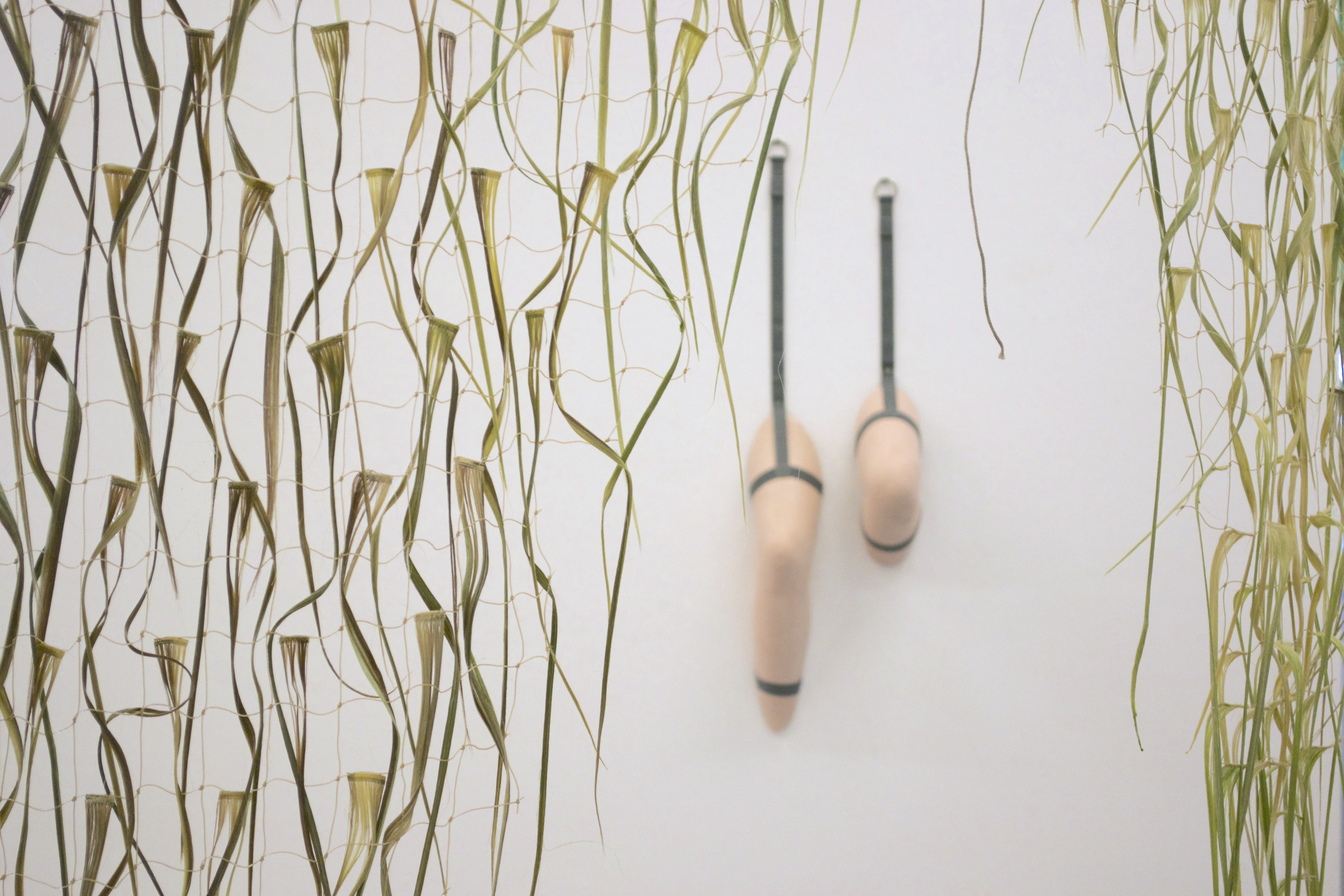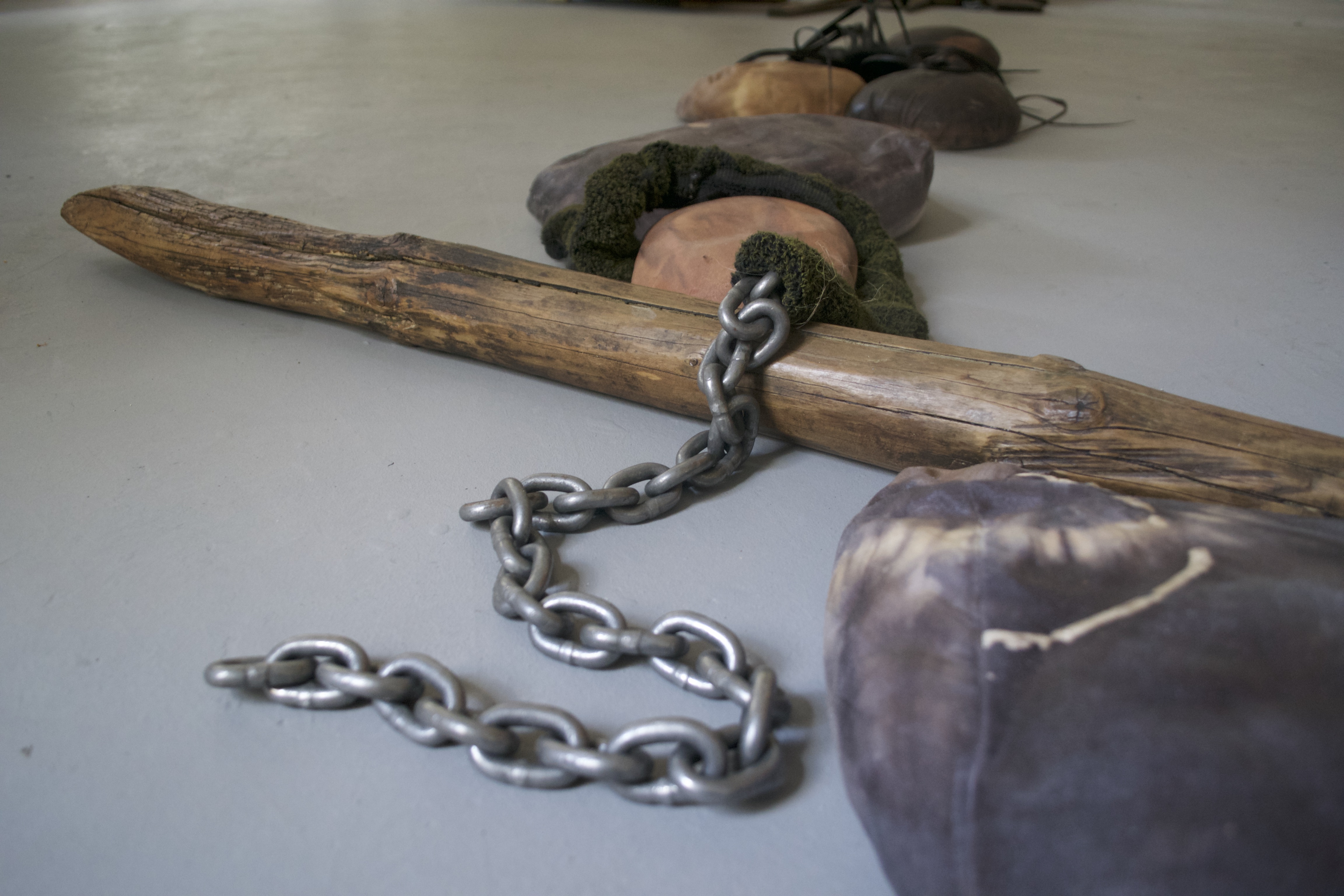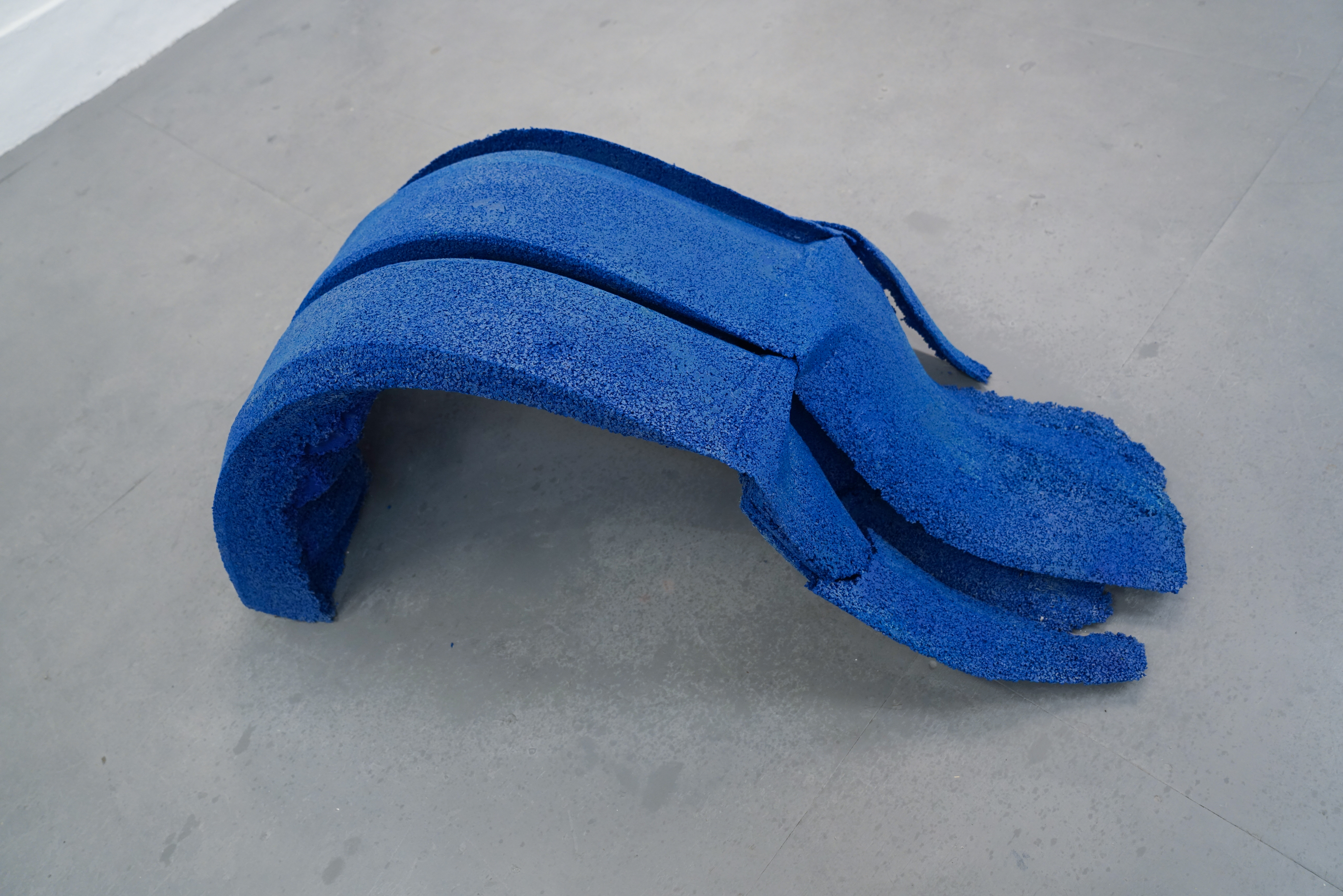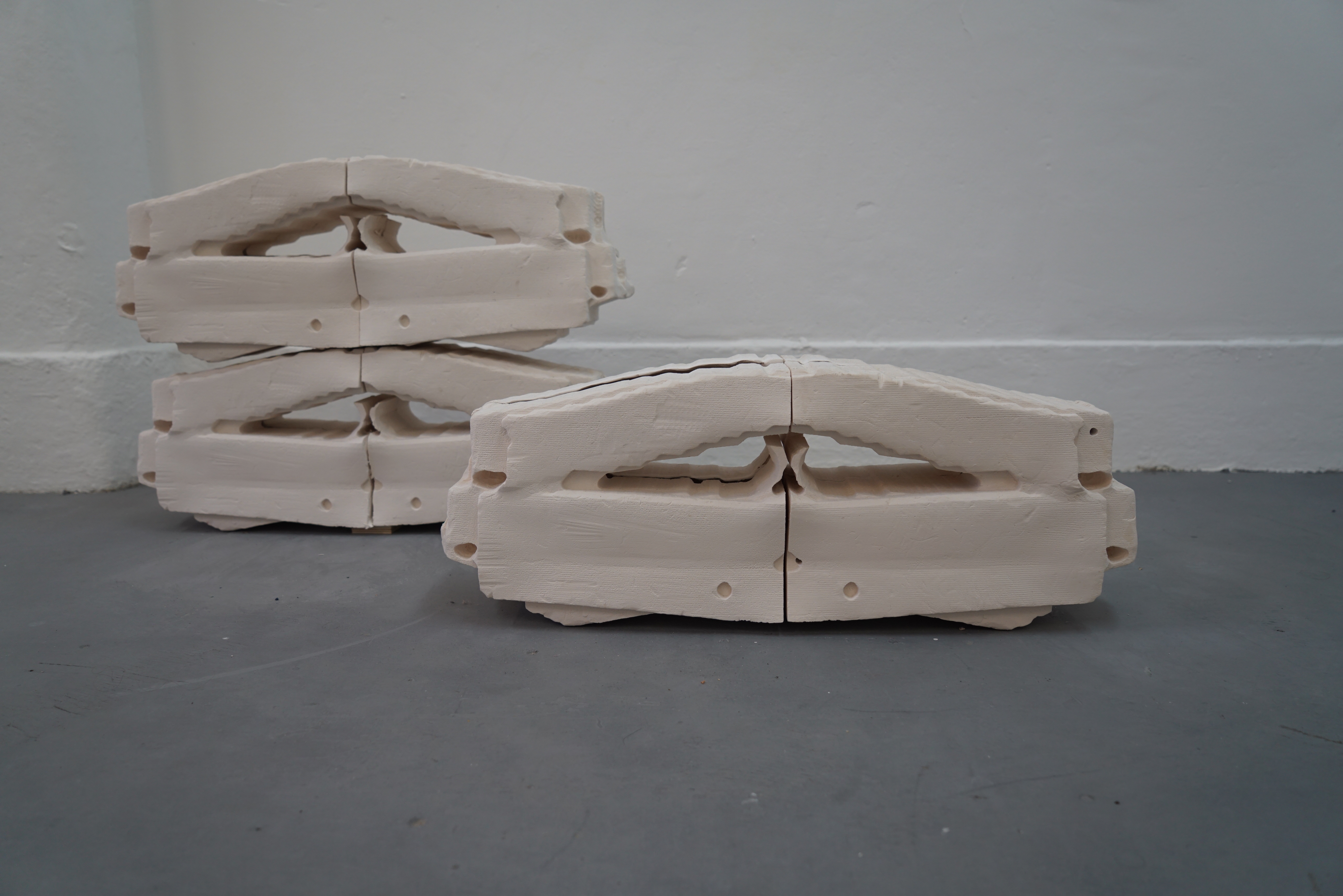Jocelyn McGregor
Jocelyn McGregor offers a fantastic first impression to the show, situated in the first room to the right of the main entrance. The multi-work installation is undoubtedly one of the highlights of the exhibition, working well with the room’s open architecture and large front window, and finding a powerful balance between earthiness and eroticism that avoids falling into either cliché. A pair of disembodied knees jut from the wall, suspended by army green thick flat ropes and calling to mind both WW1 amputees and can-can dancers—seductive and also oddly surgical. The use of fat metal chains and suspended forms add to the dungeonesque vibes, contrasted with the use of round rock forms, moss and weather-beaten timber. Moth, the title of the installation in full, draws on both life and decay and feels highly original.



Sandra Lane
In the room following McGregor’s, Sandra Lane is another favourite, also showing an impressive installation that weaves its way around a large space (the space is especially noticeable at the Slade, as the individual works are given much more room than typical graduate shows, which adds a greater air of professionalism to the work and immersion within each piece). A wobbly-edged, bright yellow slip-on shoe and a scattering of giant coloured buttons are placed about the ground, a peachy pink sack-like bag hangs from the wall, slouching down onto the floor. Big tubular shapes in white, yellow and blue snake around the space, making the most of the high ceilings. The piece is attractive—powdery pastel colours and soft edges—but also grubby, with the underlayers of gauze showing through the surfaces of sculptures. At one point, a set of five long witchy toes, nails finished off with cracked orange varnish, protrude from a white stiletto form. Fun, playful and confident.



Michela De Nichilo
Another effective installation comes from Michela De Nichilo, who has taken over a top floor room with mud, grass, plastic tubing and video. The room smells potently of the outdoors on approach—a factor made even more powerful for its placement high up, where one might least expect it—and the piece appears to encourage viewers to slosh around in the churned-up soil (or sit in it, as some were doing on the opening evening) to watch a screen which is hung from above, facing the floor. This invites a casual relationship with the work, and a feeling of being totally enveloped inside it. Organic and man-made forms merge in the piece and the scale is disconcerting—the giant tubes that hang from the ceiling could be understood as contraptions for feeding the environment, but they also relate to the worms that are referenced in the piece, as well as the many natural tubes and roots that enrich and are enriched by the earth.



Dominic Di Spirito
The paintings and animations of Dominic Di Spirito are cool and colourful, with everyday scenes—dog walking, market-stall selling etc—given a neon jolt of life. The animations are the most exciting element, combining jerky and at times manic movements with daily and mundane activities such as working out. The world in Di Spirito’s works feels recognisable but also oddly alien, and has a sketchy rather than polished feel to it, drawing to mind a place that is malleable and changeable, as well as technically experimental for the artist. For the simplicity of lines within some of the paintings—faces are reduced to bold blocks made of only a few colours—there is a great deal of expression in Di Spirito’s characters, most often, the pissed off scowl that we’re used to seeing plastered on the faces of city dwellers going about their daily business. The couple in Mouths are for kissing and shouting are a particularly funny example of this, as they move in for an angry-looking snog against a tree trunk.



Dominic Dispirito
Giota Papakiriakou
Giota Papakiriakou’s use of texture and surface is unexpected, her sculptures often only revealing their material on close inspection. Three chimney-like forms stand erect at the back of the room, appearing entirely solid. The individual, rectangular foamy forms that they are composed of appear tile-like on first look, coated with thick layers of white plaster. An arched, deep blue sculpture made of rubber chips is also difficult to place, appearing foamy and sitting somewhere between readymade and art object. Colours are bold in places—such as the artist’s use of a zebra-like pattern of jet black and white on a set of five flat-topped cones—and washed out in others, looking as though there was little artist intervention at all. Once again, the size of the room allows these works the space to breathe, interacting with each other but also viewable as standalone pieces.



The Slade School of Fine Art MA/MFA/PHD Degree Show runs until Sunday 18 June





